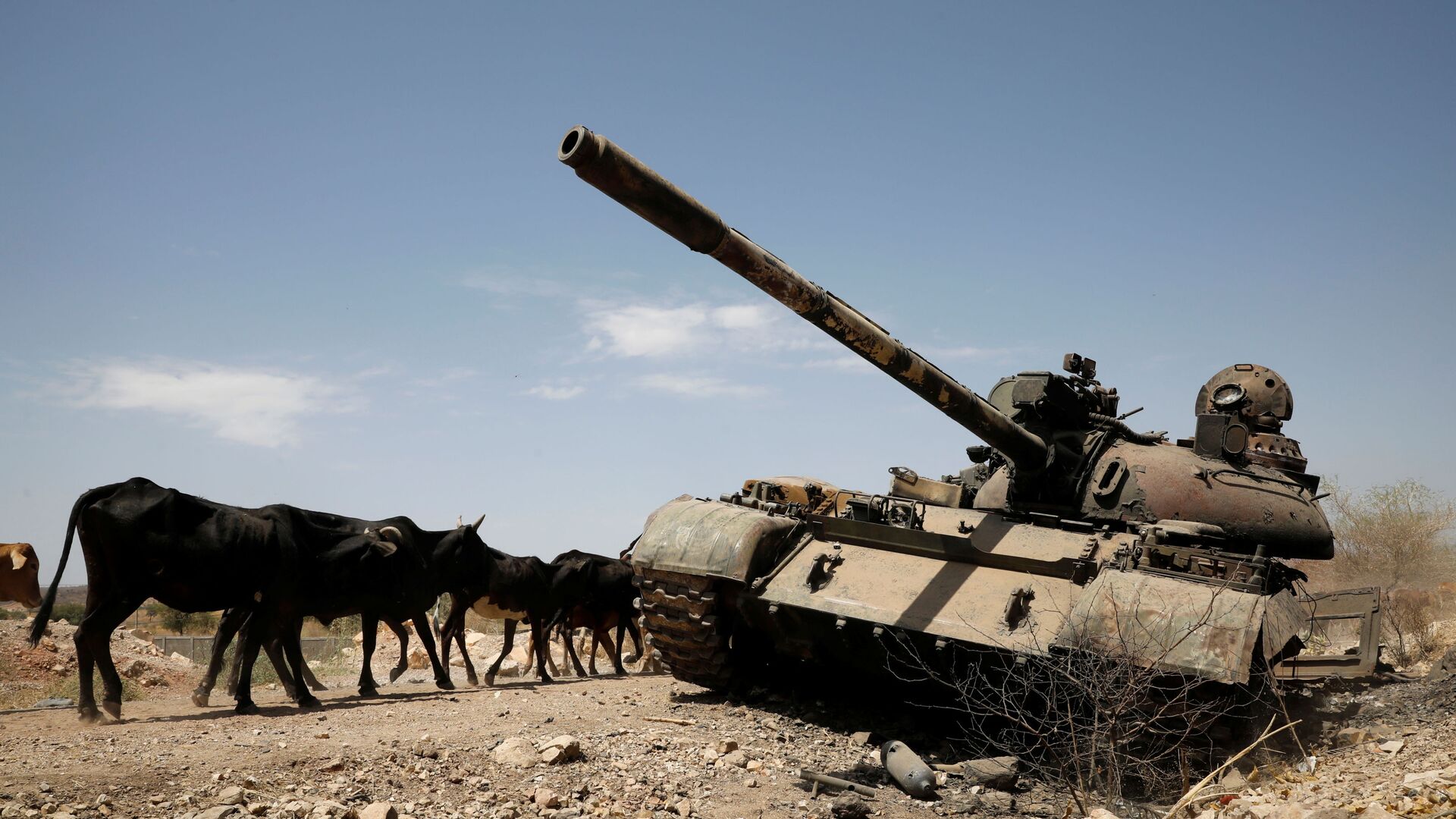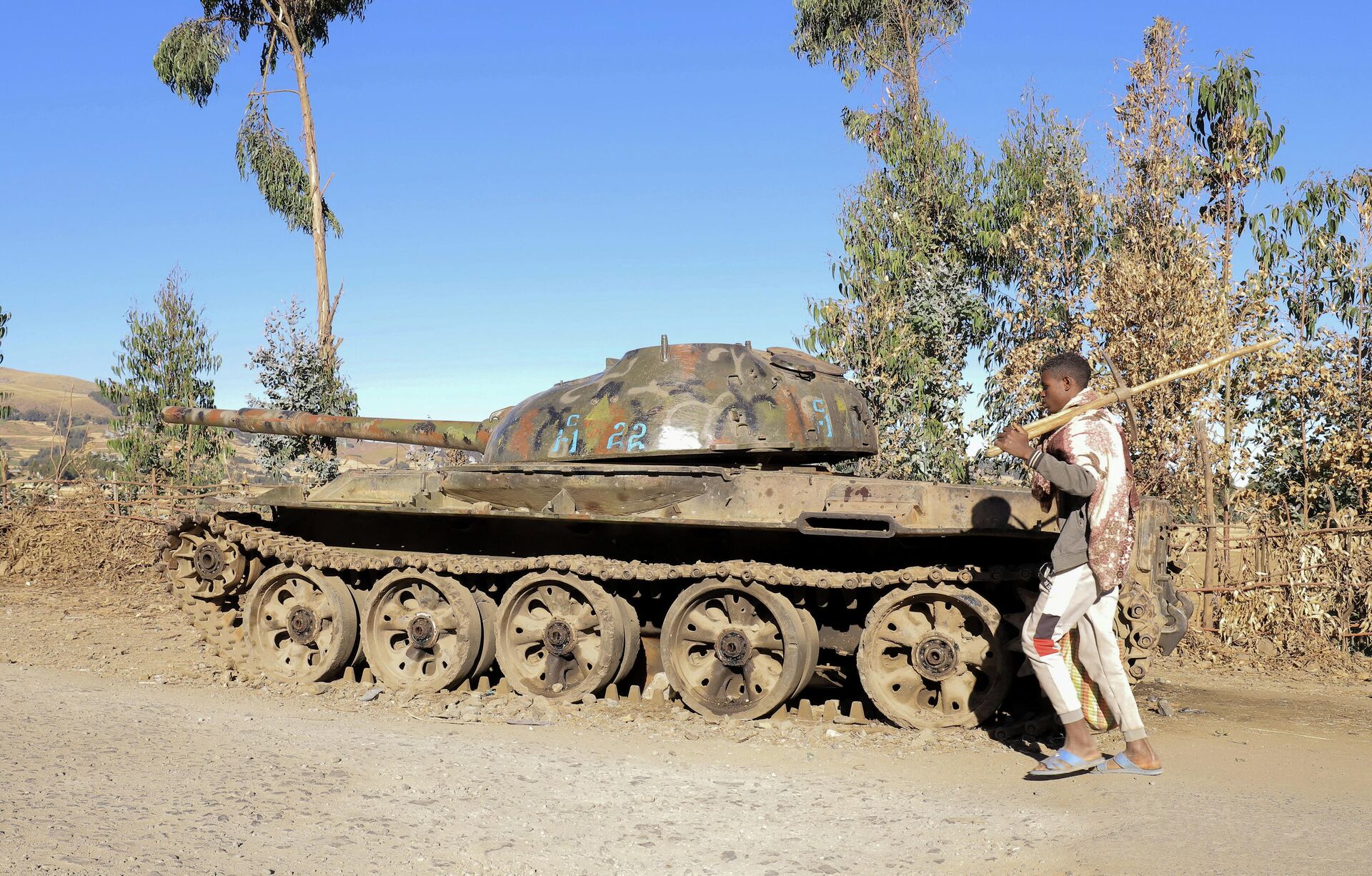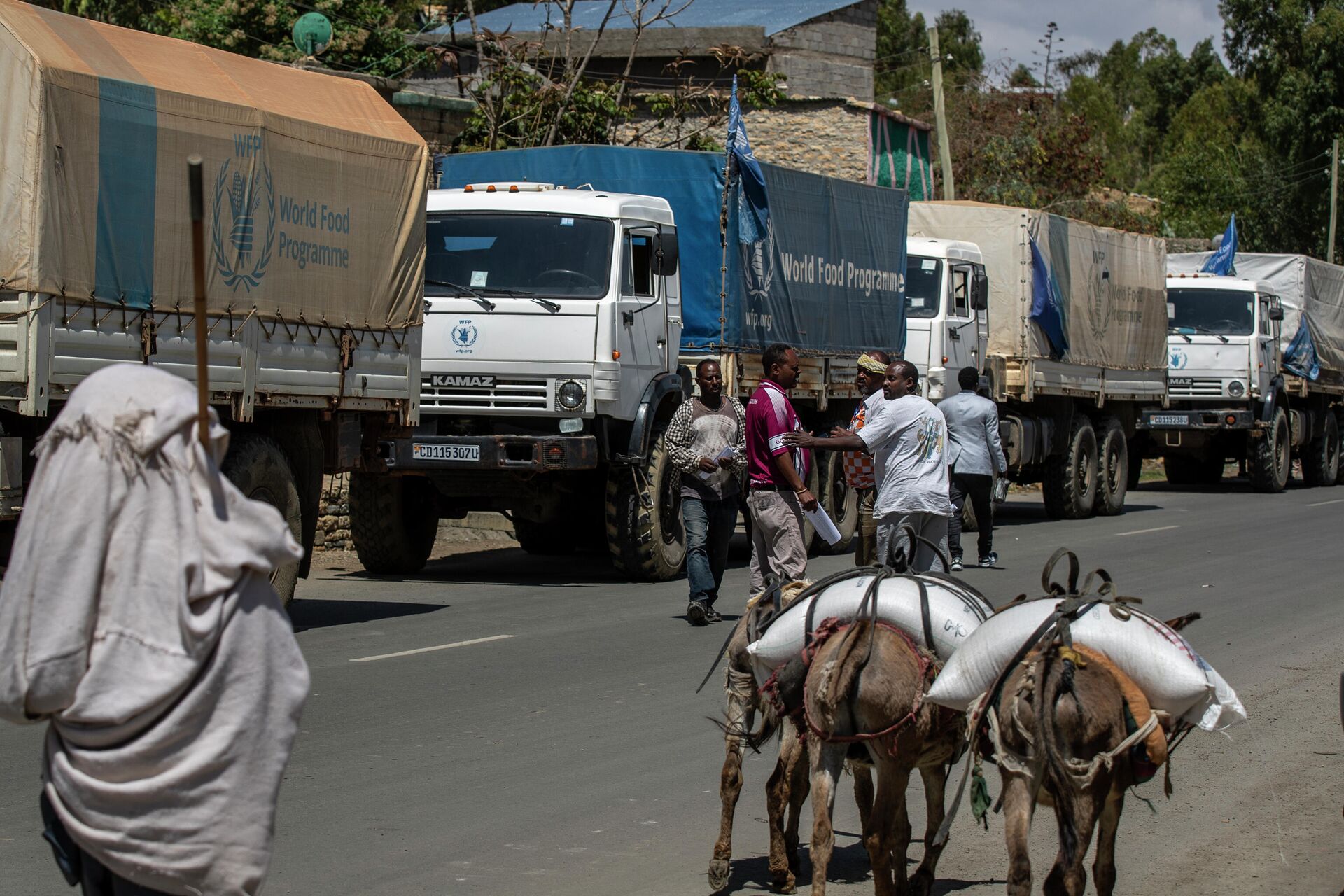Stalemate Sets in as Ethiopian Army Holds Positions in Liberated Amhara, Afar Towns Outside Tigray
20:58 GMT 23.12.2021 (Updated: 01:32 GMT 24.12.2021)

© REUTERS / BAZ RATNER
Subscribe
The Ethiopian National Defense Forces (ENDF) will maintain their positions in Amhara and Afar states after pushing the Tigray People’s Liberation Front (TPLF) out of them in a hard-fought counteroffensive, believing the rebel group to be severely weakened after the defeat.
“The first phase operation to expel the terrorist group from the areas it invaded has ended with victory. At this moment the enemy´s desire and ability (to engage in war) is severely destroyed,” Legesse Tulu, Ethiopia’s ministry of government communications, announced on Thursday. The country’s parliament designated the TPLF a terrorist organization in May, after months of war against the group.
“The government will take further steps to make sure that (the TPLF) desire won´t arise again in the future. For now, Ethiopian forces are ordered to maintain the areas it has controlled,” he added.
Legesse also called on the TPLF and other allied groups, like the Oromo Liberation Front (OLF), to disarm.
Western media had previously reported without evidence that the government of Ethiopian Prime Minister Abiy Ahmed had “dismissed calls for a ceasefire” offered by TPLF chairman Debretsion Gebremichael over the weekend. However, in the remarks quoted from Abiy’s spokeswoman, Billene Seyoum, she said that Abiy was committed to a peaceful resolution of the conflict, but whether the TPLF's actions are "a strategic retreat or not, will inevitably reveal itself."
Notably, the TPLF didn’t appeal directly to Addis Ababa for peace, but to the United Nations Security Council, which it asked to guarantee such a peace, even if it means imposing a no-fly zone over the northern Tigray state.

A farmer walks past a military tank destroyed recently during fighting between the Ethiopian National Defense Force (ENDF) and the Tigray People's Liberation Front (TPLF) in Damot Kebele of Amhara region, Ethiopia December 7, 2021. Picture taken December 7, 2021.
Past Peace Overtures Dismissed as ‘Sick Joke’
After the TPLF had largely expelled the ENDF and Eritrean Defense Forces (EDF) from Tigray in June, the allied armies offered a unilateral ceasefire, which TPLF spokesperson Getachew Reda dismissed as a “sick joke.”
“We want to stop the war as quickly as we can,” Getachew told the Associated Press. Just days later, the TPLF launched its invasion of Amhara and Afar, swiftly advancing southward along Highway 2, the main road to Addis Ababa. By late November, they had approached within 190 kilometers of the capital before being repulsed by the wide-ranging ENDF counteroffensive that eventually expelled the TPLF from Afar and Amhara.
As Sputnik reported at the time, the group enjoyed the support of Washington and US allies in Europe, whose diplomats met with TPLF leaders and advised them to seize Addis and declare a post-Abiy “transition government.”
On Monday, Getachew claimed the TPLF had withdrawn from Afar and Amhara by its own volition, claiming it was far from defeated and was doing so in order to take away “whatever excuse the international community [has used] to explain its feet-dragging when it comes to putting pressure” on Abiy. However, as Ethiopian media reported over the weekend, a new ENDF drive across the TPLF’s thin line of controlled territory succeeded in severing its supply lines by capturing several key towns, sending the TPLF retreat into disarray.
On Wednesday, prior to Legesse’s announcement, Fana Broadcasting Corporate (FBC) reported the ENDF had recaptured Sekota, an Amhara town about 21 miles from the Tigray border by road. The state-owned media outlet also noted the ENDF was fighting in Muja, in northern Amhara state, but also said the military had captured Temuga, the southernmost town in Tigray, and was intent on advancing on Almata further to the north.
As the TPLF pulled back into Tigray, a bulletin went out on Tigrayan media calling on all able-bodied men of age to be prepared to take up arms and defend the region in case government forces continue to advance.
All parties to the conflict in Ethiopia must cease hostilities, end human rights abuses, allow humanitarian access, and enter negotiations. There is no military solution to the conflict. (2/2)
— Bureau of African Affairs (@AsstSecStateAF) December 23, 2021
Abiy’s office announced on Wednesday that a National Dialogue Commission would be formed “with an independent mandate to bridge differences and chart an inclusive way forward for national understanding and alignment.” However, Foreign Ministry spokesperson Dina Mufti clarified on Thursday that the dialogue should not be mistaken for negotiation with a terrorist organization.
However, the terms for peace laid out by Abiy’s government in November include not just that the TPLF withdraw from Afar and Amhara and stop attacking ENDF and EDF forces, but also that they recognize Abiy’s government as the legitimate government of all of Ethiopia. Given their posturing with the UN to be treated as an equal to the Ethiopian government instead of as a rebel non-state actor, that seems unlikely at the moment.
Despite the recent developments, on Thursday evening US President Joe Biden decreed that Ethiopia, along with Mali and Guinea, would be removed from the African Growth and Opportunity Act (AGOA) preferential trade deal on January 1, 2022. It’s just the latest in punishments handed down by Washington, including sanctions against Eritrea and the withholding of $272 million in aid money.
Rebellion Begets Humanitarian Crisis
The TPLF ruled Ethiopia for 27 years after coming to power in 1991 at the head of a movement to oust the Derg military regime. The group used an ethnicity-based federal system to control the country’s roughly 80 different ethnic groups and became a close ally of Washington, sending Ethiopian troops into various African states in conjunction with the newly formed US Africa Command (USAFRICOM). They also launched a disastrous war against Eritrea in 1998, just years after it won independence from Ethiopia, which killed more than 120,000 people and resulted in a standoff.
After mass protests against their government in 2018, the other ethnic parties in the TPLF ruling alliance, the Ethiopian People's Revolutionary Democratic Front (EPRDF), also rebelled, choosing Abiy, an Oromo, instead of a Tigrayan to be its next chairman. Abiy became prime minister and quickly made peace with Eritrea, winning a Nobel Peace Prize that the New York Times recently bizarrely attempted to claim had emboldened him and Eritrean President Isaias Afwerki to plan a revenge war against Tigrayans.

A convoy of trucks from the World Food Program stops by the side of the road after receiving news that the road ahead has been closed by the Ethiopian military with the sounds of shelling heard earlier, near Agula, in the Tigray region of northern Ethiopia Saturday, May 8, 2021. Thousands of people have been killed in the fighting between Ethiopian and allied forces and Tigray ones, the result of a political struggle that turned deadly in November.
© AP Photo / Ben Curtis
Abiy also combined the EPRDF alliance into a single centralized Prosperity Party, which seriously undercut the TPLF’s power. After the TPLF attempted to hold illegal elections in September 2020, when Addis had postponed all elections due to the COVID-19 pandemic, ENDF forces were deployed to Tigray. On the morning of November 4, 2020, the TPLF launched a sneak attack on ENDF bases, beginning the present conflict.
The war has produced a massive humanitarian crisis: more than 70,000 people had fled across the border into neighboring Sudan and an estimated 4 million more internally displaced, according to United Nations data. In addition, some 9.4 million people also require food aid. There is no reliable death toll for the conflict.
The UN World Food Program (WFP) has attempted to deliver aid to the most hunger-stricken areas, which includes Tigray state. At a press conference earlier this month with Catherine Sozi, the UN Resident and Humanitarian Coordinator in Ethiopia, Commissioner for the National Disaster Risk Management Commission of Ethiopia (NDRMC) Mitiku Kassaand denounced the TPLF’s seizure of 1,010 WFP trucks and called on the UN to similarly denounce the TPLF’s use of food aid as a weapon of war in the areas of Amhara it had occupied.

